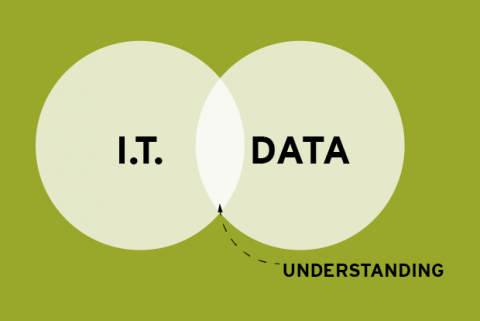When I see what some companies are doing these days with cloud and big data, I often wonder whether technology has ever been focused on business value in their organizations. I’ve worked primarily in industries where technology had to deliver business value or it was a non-starter. These days it is no longer sufficient to be a technologist that is simply putting bits and bytes together. Today it’s all about how those bits and bytes add value. Defining how a new technology approach will add value is the role of an IT executive, but that’s where too many executives drop the ball.
Removing the Bias from Big Data
With cloud and big data in particular I think there’s a real danger in buying into the hype without understanding the implications. If you do that, it’s almost certain you will make bad decisions. With big data, the risk is that you find the answer you’re looking for –whatever it is. It’s a psychological fact that if you have a preconceived notion, data will help drive to that point of view. If you say, “What is impacting my sales growth…and by the way I think it’s poor product performance,” you’re magically going to get a lot of data coming in about poor product performance and it will validate that notion. This predictive bias often ends up being an organizational, structural, and mindset issue.
Big data is really about measuring what matters versus measuring what’s measurable. And to be honest there are not enough good data scientists out there. So it can still be more dangerous to do big data than not. It’s accessible to anyone now, but sometimes you want to take the keys away from people so they don’t hurt themselves. You may be better off taking a more cautious path than diving into the deep end, but at a minimum go in with eyes wide open.
Cloud Initiatives Beg for Clarity
In the same way, you can’t decide to be a cloud-first organization without deciding what cloud first should mean for you. Does it mean Platform-as-a-Service or email? Does it mean development or delivery? If you don’t get into the right level of detail, you’re sending your teams into blood fights to battle for what they want, versus what the strategic direction is. Leaders need to take a more active role in getting into the details of what is meant by these strategic decisions. You don’t want to micromanage things, but at a very minimum you should be sending teams off to come back with the critical decisions that need to be made and have those discussions and make those decisions at the right levels. If the bosses are not aligned the employees will be wasting precious time fighting losing battles. Sometimes it’s easier not to have fights with your peers, but that just means you’re leaving it for your employees and that is simply cowardice. Forcing uncomfortable discussions about what a cloud or big data strategy means and then getting into the detail is often the better course to take.
Executives have to drill in to get agreement at the deeper levels. They have to make the hard decisions. If you’ve got three bosses that aren’t aligned, it’s patently unfair to expect their teams to get aligned. So if you have to have uncomfortable conversations, have them.
Even Agile Can Slow You Down
There’s a faddish IT dynamic out there across a lot of things. Look at agile. There isn’t a developer or development organization out there today saying, “I’d really prefer to be doing waterfall.” The problem is, most of the architectures they’re working on don’t lend themselves to agile. If you work in an agile model in a fragile architecture, things are likely to break. You don’t want DevOps guys making minimum marketable changes in a legacy, tightly coupled architecture.
But nobody wants to do waterfall, so you get sprawl of organizations saying we do agile. What they often want is to do waterfall with limited documentation and agile practices, which is going to cause more problems than do good. There may be a fear you can’t get the right talent. There’s a real passion that says, “I can’t get the talent I want unless I’m doing agile.” Then organizations do agile but don’t have real product managers and they aren’t really managing stories. You’re doing some things, but not in a way that’s valuable.
Yes, you can dive into an IT fad without thinking about it, but I can promise you’ll look back and be horrified someday. The only time you can fully adopt some of these new methods is when you are starting from scratch. Most of us don’t have that luxury because we are working with legacy architectures and technical debt so you have to play hand you’ve been dealt, communicate well, set clear and measurable outcomes, and use these fads to thoughtfully supplement the environment you are working in to benefit the ecosystem.
Read this Harvard Business Review article, "Beware the next big thing."
Sven Gerjets is Chief Technology Officer at Pearson, the world’s leading learning company, with 40,000 employees in more than 80 countries. He brings 20 years of IT experience to his role, including application development, system integration, enterprise program management, and large organization leadership.




